Two blocks (from very far apart) are approaching towards each other with velocities as shown in figure. The coefficient of friction for the blocks is μ=0.2.

How much distance will centre of mass travel before coming permanently to rest.
25 m
37.5 m
42.5 m
50 m
Step by step video & image solution for Two blocks (from very far apart) are approaching towards each other with velocities as shown in figure. The coefficient of friction for the blocks is mu=0.2. How much distance will centre of mass travel before coming permanently to rest. by Physics experts to help you in doubts & scoring excellent marks in Class 11 exams.
Updated on:21/07/2023Similar Questions
Two blocks (from very far apart) are approaching towards each other with velocities as shown in figure. The coefficient of friction for the blocks is μ=0.2.

Linear momentum of the system is
View SolutionBlocks A and B each of mass 1kg are moving with 4m/s and 2m/s respectively as shown. The coefficient of friction for all surface is 0.10. Find the distance (in m) by which centre of mass will travell before coming to rest. Assume large distance between the blocks

View Solution
Knowledge Check
Two blocks A and B of masses 10 kg and 15 kg are placed in contact with each other rest on a rough horizontal surface as shown in the figure. The coefficient of friction between the blocks and surface is 0.2. A horizontal force of 200 N is applied to block A. The acceleration of the system is (Take g=10ms−2)
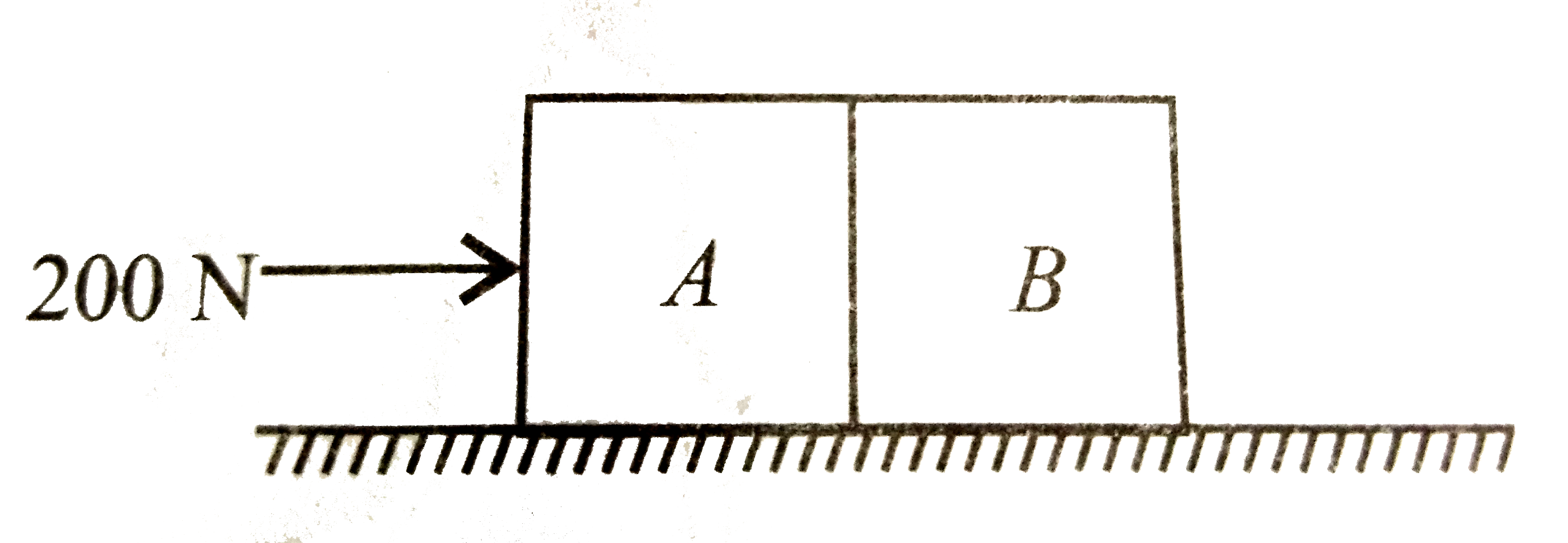 A4ms−2B6ms−2C8ms−2D10ms−2
A4ms−2B6ms−2C8ms−2D10ms−2
Assertion: Two blocks of masses mA and mB (>mA are thrown towards each other with same speed over a rough ground. The coefficient of friction of both the blocks with ground is same. Initial velocity of CM is towards left.

Reason: Initial acceleration of center of mass is towards right.
View SolutionFor the arrangement shown in the figure the coefficient of friction between the two blocks is μ. If both the blocks are identical and moving ,then the acceleration of each block is
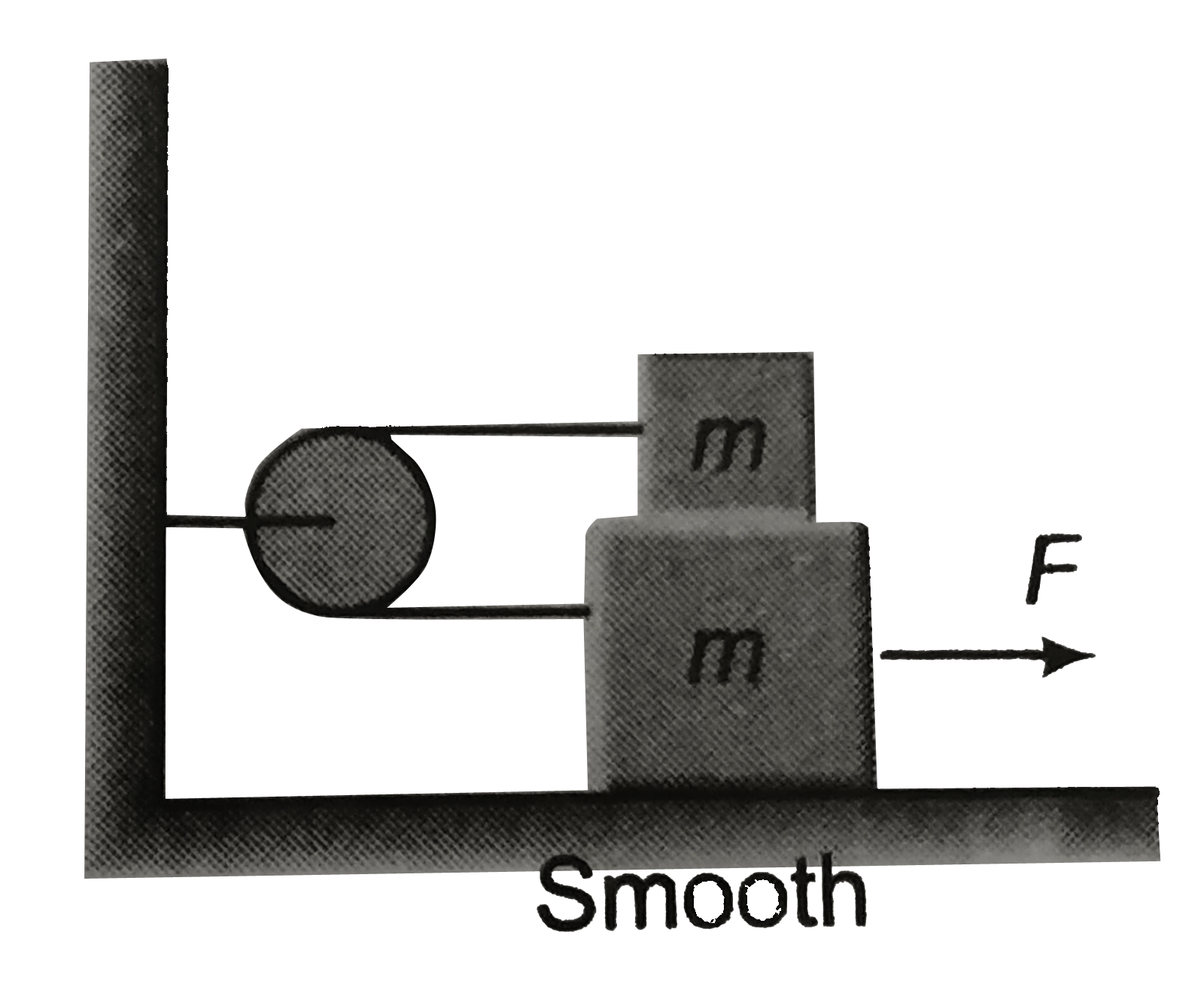
View SolutionA block A slides over an another block B which is placed over a smooth inclined plane as shown in figure . The coefficient of friction between the two blocks A and B is μ . Mass of block B is two times the mass of block A . The acceleration of the centre of mass of two blocks is
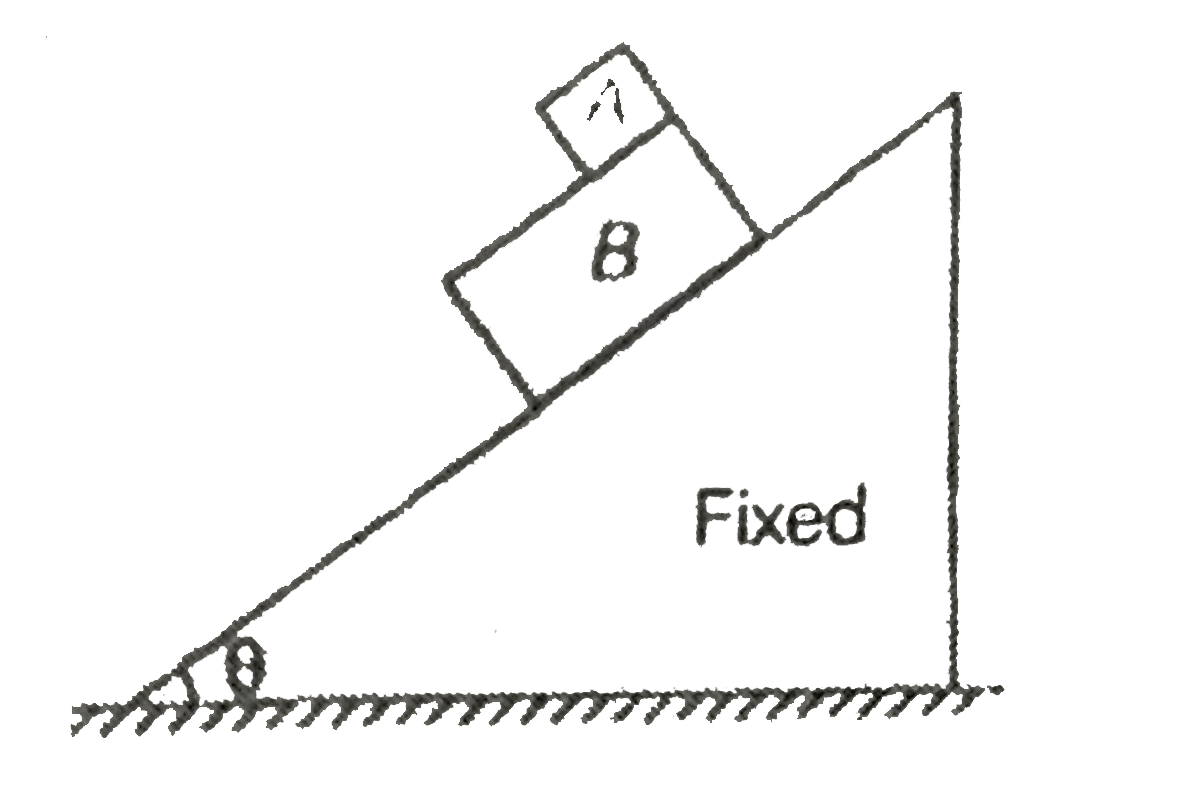
View SolutionOn a smooth table two blocks of masses 2.5kg and 1.5kg are placed one over the other as shown in figure. If the coefficient of static friction between two blocks is 0.2, the maximum horizontal force to be applied on the lower block so that the two blocks move together is (g = ms−2)

View SolutionA small block of mass m is projected on a larger block of mass 10m and length l with a velocity v as shown in the figure. The coefficient of friction between the two block is μ2 while that between the lower block and the ground is μ1. Given that μ2>11μ1.
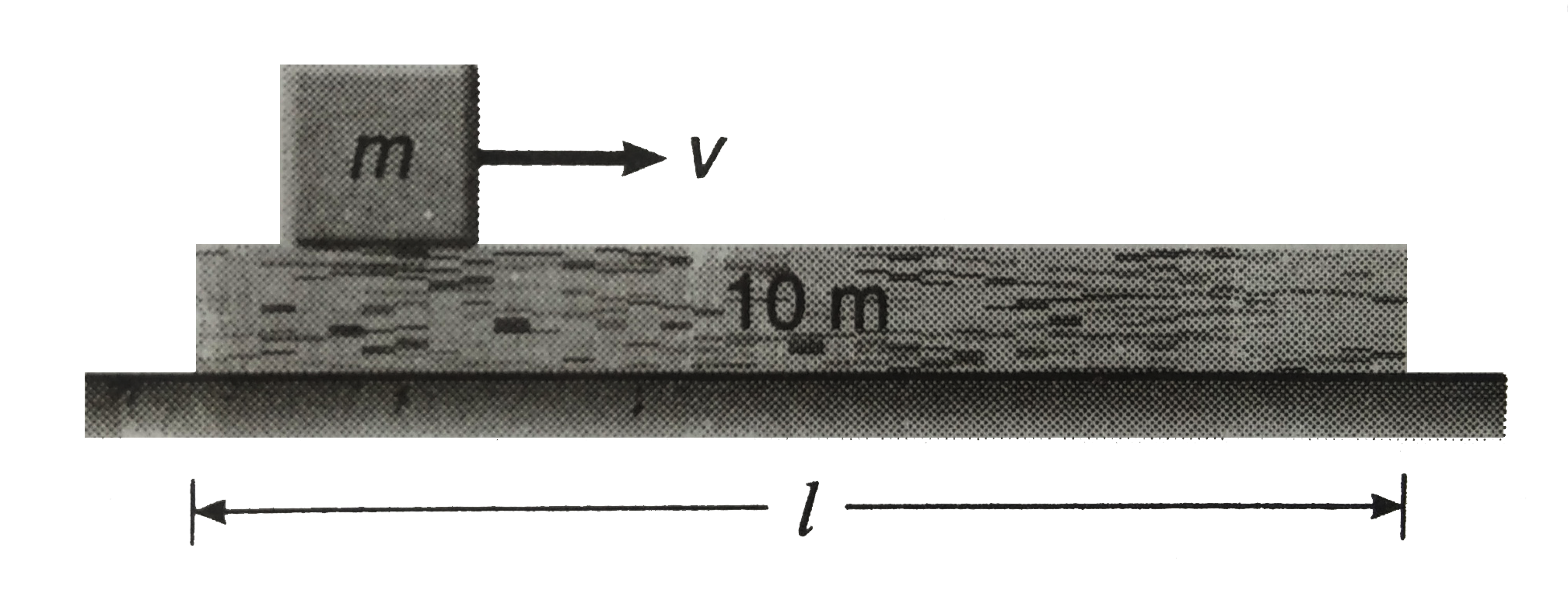
(a) Find the minimum value of v, such that the mass m falls off the block of mass 10m .
(b) If v has minimum value, find the time taken by block m to do so.
View SolutionA cart of mass M has a block of mass m in contact with it as shown in the figure-2.133. The coefficient of friction between the block and the cart is μ. What is the minimum acceleration of the cart so that the block m does not fall ?

View SolutionTwo blocks A and B are lying on the table as shown in the figure. The coefficient of friciton between block A and block B is μ. The coefficient of friction between block B and ground also μ. An external force F is applied in the direction shown. The maximum value of the force F that can be applied without moving the blocks.
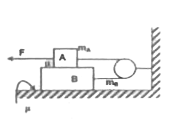
View Solution
